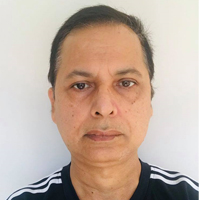Influence of corneal spherical aberration, anterior chamber depth, and ocular axial length on the visual outcome with an extended depth of focus wavefront-designed intraocular lens
Published on: 8th August, 2022
Purpose: The purpose of the study was to evaluate which ocular parameters have an impact on visual results obtained after an extended depth of focus (EDF) wavefront-designed intraocular lens (IOL). Setting: The study was conducted in three Italian centers (private practice in Lucca and two ambulatory surgical centers in Pisa and in Rome) from 01/09/2014 to 30/09/2015.Design: The study population included 178 eyes of 91 patients who had cataract surgery and implantation of an EDF wavefront - designed IOL (Mini Well Ready - SIFI Med Tech S.r.l.).Methods: Preoperative and postoperative refractive corneal spherical aberration (SA), ocular axial length, or anterior chamber depth were measured.Results: The majority of patients were spectacle-independent for near, intermediate, and distance vision and no one reported disturbing halos or glare. No overall significant differences were observed when stratifying anterior chamber depth (ACD) and ocular axial length (AL) by uncorrected distance visual acuity (UCDVA); p = 0.465 and 1.000 respectively, corrected distance visual acuity (CDVA); p = uncorrected near visual acuity (UCNVA); p = 1.000 and 0.728 respectively; p = 1.000 under both parameters and halos; 1.000 under both parameters. Still, there was a statistically significant difference when stratifying SA with 5 mm only by UDVA (p = 0.040).Conclusion: These results are consistent with similar outcomes in the scientific literature as measured with tests of visual acuity, either with or without optical correction. We also demonstrated that these IOLs can be used in myopic and hyperopic eyes, although it may be useful to evaluate the preoperative corneal SA to achieve better results.
Cost-analysis comparison of clinical risk assessment with and without ROMA for the management of women with pelvic masses
Published on: 17th August, 2022
Objective: Pelvic masses can be classified as low risk (likely benign) and high risk (likely malignant) based on an initial clinical risk assessment, which involves a detailed history, physical exam, basic laboratory tests, and imaging. In recent years, the Risk of Ovarian Malignancy Algorithm (ROMA), which combines CA125, HE4 and menopausal status, has emerged as a powerful tool in the classification of pelvic masses and triage of patients to either a generalist gynecologist or a gynecologic oncologist for management. The objective of this study was to evaluate whether the use of ROMA, alone or in combination with Initial Clinical Risk Assessment (ICRA), provides cost savings compared to triage based on ICRA alone.Methods: A health-economic decision model was developed to assess clinical and cost differences associated with three different clinical pathways of risk assessment for a pelvic mass: ICRA alone, ROMA alone, or ICRA + ROMA in combination. Using previously reported accuracy rates and patient characteristics from a prospective, multicenter, blinded clinical trial, total healthcare costs were modeled for each clinical pathway using the Medicare 2020 reimbursement rates.Results: A total of 461 patients with pelvic masses were included with 10.4% ultimately diagnosed with epithelial ovarian cancer. Total healthcare costs for patients with benign disease, EOC, or low malignant potential tumors (LMP) (n = 441) triaged using ROMA alone were 3.3% lower than when triaged using ICRA alone. While lab costs increased 55% using ROMA, the use of ROMA alone resulted in a 4% decrease in laparoscopy costs and a 3.1% decrease in laparotomy costs compared with ICRA alone. Similarly, total costs associated with a combination of ICRA + ROMA were 3.9% lower than total costs associated with ICRA alone. The model also predicted a 63% reduction in repeat surgeries resulting from false negative ICRA when using ROMA to triage patients.Conclusion: Triage of women with pelvic masses using the more sensitive ROMA score lowers overall healthcare costs compared to ICRA alone. With fewer false negative results than ICRA alone, the ROMA score improves initial detection of malignancy and reduces second surgical treatments in women with pelvic masses.
In the pursuit of a new route on acute myeloid leukemia treatment
Published on: 29th December, 2021
Acute myeloid leukaemia (AML) is the forefront disorder of the bone marrow among others that disrupt the normal production of blood cells and platelets. The bone marrow microenvironment or the bone marrow niche (BM niche) that orchestrates the proliferation and survival of Leukaemic stem cells (LSC) is the reason for relapse after complete remission and also chemotherapy drug resistance. As for most cancers oxidative phosphorylation, a fundamental mitochondrial process of energy production, is under focus for the treatment of AML and a novel strategy of targeting heat shock proteins appears as a promising route for further research.
Management and use of vacuum systems in a surgery ward
Published on: 31st March, 2023
Vacuum therapy has become a new option in the treatment of wounds in surgery. More recently this therapy has also been used as a treatment for anastomotic leakages in association or not to emergency surgery. The management of these devices should be familiar to all the staff in a surgical ward.
Malignancy induced haemophagocytosis of leukaemic blasts by macrophages and transformation into a multinucleated giant cells
Published on: 27th July, 2021
OCLC Number/Unique Identifier: 9150235492
Haemophagocytosis is a dysregulated immune condition characterised by both inflammation and uncontrolled activation of macrophages and T-cells, which causes aberrant cytokine release, leading to cytokine storm [1] it can be primary or secondary, depending upon the etiology.
Environmental Factors Affecting the Concentration of DNA in Blood and Saliva Stains: A Review
Published on: 7th May, 2024
DNA evidence has now become an essential part of forensic investigations since it offers vital information for person identification and crime resolution. However, the biological material is affected by some environmental factors which may impact the DNA in biological samples. This may affect the correctness and reliability of forensic DNA analysis. This review is related to the influence of various environmental conditions on the stability and degradation of DNA in biological stains including blood and saliva stains. The common factors that affect DNA are temperature, humidity, exposure to sunlight, and type of substrate. The information is crucial to improve forensic DNA analysis and forensic protocol optimization. The DNA stability and integrity in biological materials, such as blood and saliva stains, are indispensable for forensic DNA analysis. Environmental influences, however, significantly affect DNA concentration and may jeopardize forensic analysis. The present review explores various environmental factors for their effect on DNA stability in blood and saliva stains. While DNA degradation is slowed but not completely prevented by low temperatures, it is accelerated by high temperatures. Risks of contamination arise from the promotion of microbial growth and DNA breakdown by humidity. DNA photodamage brought on by sunlight exposure results in strand breakage and cross-linking. DNA stability is also influenced by the type of substrate used; porous surfaces, such as cloth, are better at keeping fluids than non-porous ones, such as glass. Maintaining the integrity of DNA evidence requires an understanding of these variables. The present studies will help to create sophisticated DNA preservation methods for use in forensic DNA examination. The study emphasizes the requirement of improvement in forensic DNA analysis skills, related to the preservation of DNA pieces of evidence and the possible effect of environmental factors.
Non-surgical Techniques for Combined Rheumatic Severe Aortic and Mitral Stenosis – Case Series and Brief Review of Literature
Published on: 13th May, 2024
Rheumatic heart disease persists as a significant concern in developing regions, often resulting in multivalvular heart conditions. Treatment options are limited, though percutaneous transvenous mitral commissurotomy effectively addresses rheumatic mitral stenosis. Non-surgical interventions for aortic stenosis include balloon aortic valvotomy and Transcatheter aortic valve replacement (TAVR), tailored to patient factors like age and comorbidities.We describe two cases of Rheumatic multivalvular disease which were managed non-surgical. The first case is a pioneering procedure performed on a young patient combined percutaneous transvenous mitral commissurotomy with balloon aortic valvotomy, guided by 4-dimensional transoesophageal echocardiography (4D TEE). This represents the first documented instance in medical literature, showcasing the potential of integrated interventions and advanced imaging techniques. In the second challenging case involving a heavily calcified, retrovirus, and Hepatitis B positive 55-year-old, a staged approach was adopted, involving percutaneous transvenous mitral commissurotomy followed by Transcatheter aortic valve replacement (TAVR). Despite complexities, this sequential strategy demonstrates the adaptability of transcatheter techniques in managing complex valvular pathologies. These cases highlight the evolving landscape of interventional cardiology and underscore the importance of tailored, multidisciplinary approaches in optimizing outcomes for patients with rheumatic heart disease and multivalvular involvement, especially in resource-limited settings. Further exploration and dissemination of such innovative strategies hold promise for enhancing cardiac care quality and expanding treatment options globally.
Ultraviolet fluorescent detection of elevated bilirubin in dried blood serum
Published on: 23rd September, 2022
Increased levels of bilirubin in blood serum may result from numerous physical conditions including hepatitis, cirrhosis, enzyme deficiency, drug reactions, autoimmune disorders and physiological trauma. No presumptive test for high bilirubin levels in blood serum stains currently exists, which could prove useful in the assessment of crime scenes involving victims with one of the above disorders. Here, the use of ultraviolet 365 (UV 365) is described as a simple, nondestructive method for the detection of blood serum containing elevated levels of bilirubin.
An uncommon gastrointestinal bleeding in a patient with portal vein thrombosis: a case report and literature review
Published on: 5th May, 2023
Portal vein thrombosis (PVT) is a rare condition that may congest bowel venous drainage and cause mesenteric ischemia. In acute settings, gastrointestinal bleeding (GIB) is rare, and acute abdominal pain is the most common clinical presentation. A 24-year-old man who presented with acute abdominal pain and a single episode of hematemesis is reported. Workups revealed evidence of thrombosis in the portal vein, but upper endoscopy was incapable to detect the source of the bleeding. We discuss the possible scenarios for the GIB in this case and review similar reports in the literature.
Which women uses social Internet networks during pregnancy?
Published on: 31st March, 2021
OCLC Number/Unique Identifier: 9023198153
Internet has become an important part of our life, including during pregnancy where it is broadly used to find information (84%). The aims of this study were (1) to describe the proportion of women using Internet Social Networks (ISN) concerning their pregnancy, during pre or postpartum hospital stay, (2) to define how ISN users refer to their pregnancy and delivery on these social networks, (3) to compare anxiety level, social sustain level, sociodemographic characteristics of the both population (4) and to determine profiles of the ISN users with multiple correspondence analysis.
Methods: 399 questionnaires were distributed in the postpartum wards of two academic hospitals in Paris, and 258 fully filled were retrieved. Tools: Anxiety scale (STAI- A and B), Cutrona Social Provisions Scale, sociodemographic and obstetrical questionnaire.
Results: 76% (n = 195) were ISN users. We compared ISN users versus ISN non users women. Demographically, the two populations were comparable. Anxiety scores were similar in both groups, whereas social support scores showed a statistical difference in social integration.
In the global population, 84% use Internet for information concerning pregnancy; this rate is higher for ISN users than ISN non users (tendency 0.058).
ISN were used in priority for sharing with relatives, and 10% with other pregnant women. Concerning pregnancy, patients posted in priority the birth announcement (28%), the pregnancy announcement (23%), and the newborn’s pictures (12%). 6% posted their fetuses’ ultrasound pictures.
Three clusters of ISN users were extracted with statistically different social support scores (p = 0.019) and comparable anxiety scores. The third one, with at risk profile, used ISN as social support. For all women, but specifically for younger and more socially fragile women, Internet gives to professional new perspectives to develop information and prevention tools during the perinatal period.




